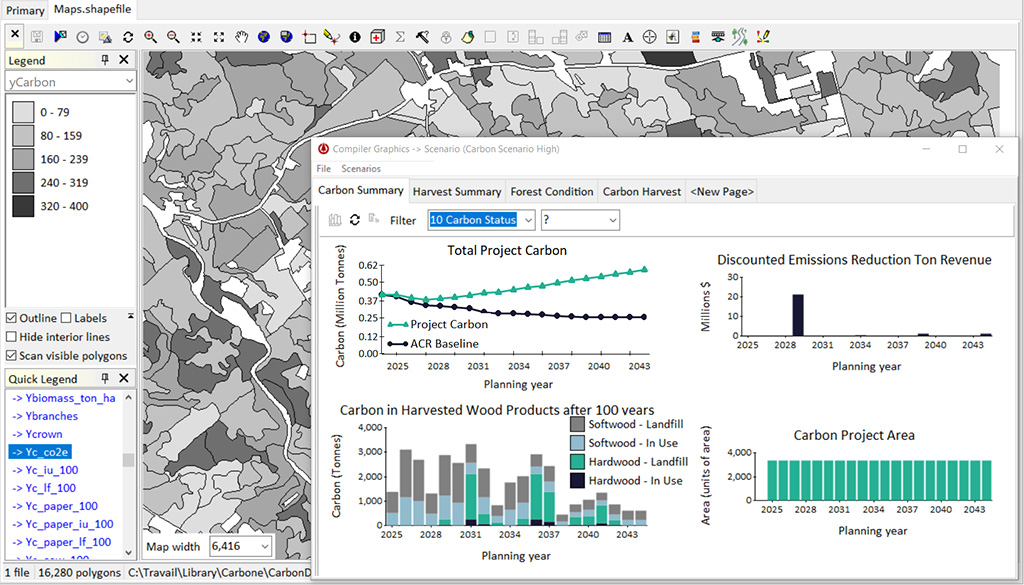Date and Publication
2008: Forest Ecology and Management, published by Elsevier, Vol. 256, p.p. 786–797
Authors
Chris R. Hennigar, David A. MacLean, Luke J. Amos-Binks
Paper Summary
This paper presents a new approach to maximizing carbon storage in both forest and wood products using optimization within a forest management model with Remsoft’s Woodstock optimization analytics software. This method was used by researchers to evaluate four alternative objective functions to maximize: volume harvested, wood product carbon storage, forest carbon storage, and carbon storage in the forest and products, over 300 years for a 30,000 hectare hypothetical forest in New Brunswick, Canada.
Effects of three initial forest age-structures and a range of product substitution rates were tested. Results showed that in many cases, carbon storage in product pools (especially in landfills) plus on-site forest carbon was equivalent to forest carbon storage resulting from reduced harvest. In other words, accounting for only forest, and not products and landfill carbon, underestimates true forest contributions to carbon sequestration, and may result in spurious carbon maximization strategies.
The results reinforce the importance of including products in forest-sector carbon budgets, and demonstrate how including product carbon in management can maximize forest contributions toward reduced atmospheric CO2 at operational scales.



